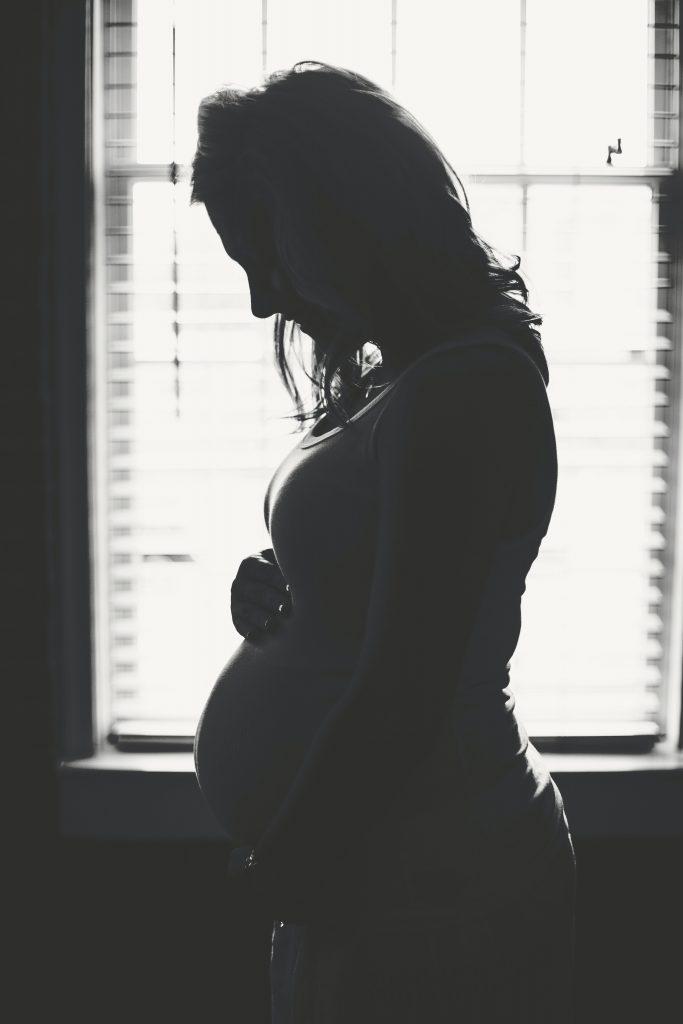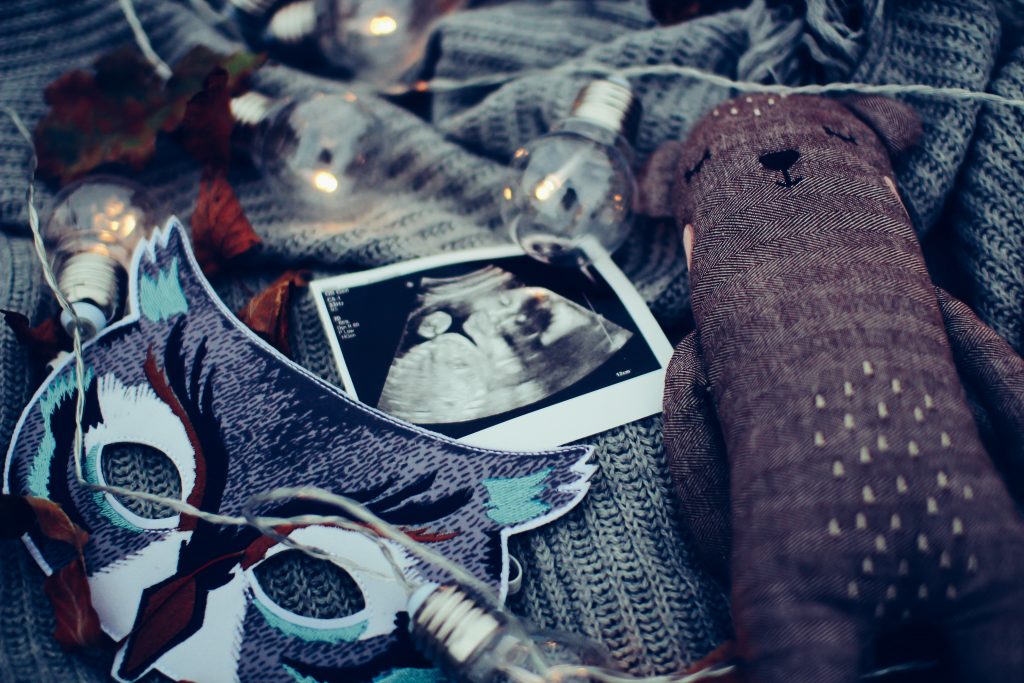Not many people know what an obstetric fistula is… Those that do may believe it happens only in under developed countries or countries that suffer from high rates of poverty and illness. I am living proof that this is false and that it can also take place in Britain.
Many women are too ashamed to talk about it, but we need to feel comfortable discussing birth injuries in order to help each other in the future.
As a first-time mum-to-be, I was over the moon about my pregnancy and had so many high expectations. My vision couldn’t have been further away from what lay ahead, every expectation I had was skewed.

Traumatic Birth with Repercussions
Before the birth of my daughter, I had no idea of what a fistula was. I had my daughter in August of 2017. It was the perfect pregnancy but this was essentially cancelled out by an extremely traumatic birth which resulted in a forceps delivery. I had sustained a fourth-degree tear and was taken into a medical theatre for immediate repair.
I was told I was healing well but deep down, I knew something wasn’t right- externally, everything was going to plan, but internally I was shattered. Two weeks later, my concerns were finally taken seriously. I was referred to a perineal nurse who confirmed that my surgical wound had broken down and I had a rectovaginal fistula.
This is an abnormal connection between two organs. In my case it was between the rectum and vagina resulting in gas and stool leaking out of the vaginal opening, I was uncomfortable, sad and most importantly injured.
After numerous appointments, clinics and another operation, the consultants came to the conclusion that I would need a stoma before attempting to help me again.
Life with a stoma was hard in the beginning. I didn’t cope very well and kept telling myself it was only temporary. I didn’t want to get used to it. I refused to, I was very much in denial. Day to day care alongside looking after my baby was challenging and I felt like I couldn’t do everything that I normally could do, it was truly debilitating.
I was always conscious of the bag showing, feeling paranoid of the bag leaking or making noise. This was my reason for turning down most social invites. It was so hard to give the real reason for my absence at the time but looking back at it I had nothing to be embarrassed about.
Years of Struggle
A year passed before my next actual repair. I recovered well and my stoma was reversed a few months later. Everything was fine for a week when I realised it had failed. My heart sank. I felt numb and couldn’t believe these horrific events were happening all over again. I kept thinking, ‘did I do everything right?’ did I rest enough?’ I read my post op care leaflets and knew everything inside out.
I knew deep down I had taken care of myself. The truth is, I had read that many women go through numerous repair attempts before being fixed. I had just hoped I wasn’t one of them, but I came to realise that I was and there wasn’t’ much I could do about it.
Another year would pass before my next procedure. During this time, I had to live with the fistula and its mortifying symptoms. We had booked a holiday which I refused to cancel, I spent the majority of time looking out for the next toilet. My daughter had a great time and saw the beach for the first time. It was worth the memories despite how difficult it was for me.
I was referred to a different hospital to a consultant that had experience in a more technical procedure. She was confident and had a seemingly great plan of action. She wanted to repair me without giving me another stoma. From that moment I had a feeling of optimism that was absent until this point, it was a new bright feeling.
Weirdly enough, I was open to having a stoma and keeping it. I knew that this operation was major, and I had one of the best consultants and plastic surgeons on board. I just felt as though if it didn’t work this time, I would just get on with my life. It had already taken up enough of my time. In the grand scheme of things, it wasn’t the end of the world and I soon came to realise there was much more to life than my trauma.
Internal struggle
The past four operations had taken months to recover from. I felt like I was in a constant sense of limbo. weak from surgery and looking fine on the outside but still having to take things easy for months on end, internally I was breaking. It was emotionally draining for me and my partner. A few doctors in the past asked me ‘is your partner still with you?’
I was quite surprised by this but as time went on I realised I had to talk more about exactly what was happening to me for him to really understand and support me. I was shocked to find out that many people’s partners left them due to having to put in so much effort.
Looking back, I was going through a dark time. On the surface I looked happy and content, but my confidence was non-existent. I focused on my little girl and refused to acknowledge myself and what I was going through. I was constantly told ‘you’re so strong’ but I really wasn’t, at least I didn’t feel it.

Road to recovery
My final procedure was carried out in July 2020, the operation took 7 hours. I was so paranoid it would fail again. Days of paranoia turned into weeks. I’d hold my breath when going to the bathroom in fear of seeing something I didn’t want to see. It has been my longest recovery period to date. I’m here ten months on and I am starting to feel ‘normal’ again, finally after what felt like hell, things have started to seem okay again.
Now imagine being a woman in a developing country who had a baby at the same time as me. It’s likely that her story would be very remarkably different and even though my journey was tough, I look back and feel grateful for the care I received, not everybody gets that luxury.
Many women, mainly from sub Saharan Africa and South Asia don’t have access to emergency obstetric services. They often go through childbirth at home, suffer traumatic birth injuries from prolonged obstructive labour and live with embarrassing symptoms.
They are abandoned by their husbands and ostracised by their communities. One million women are living with a fistula worldwide and only 16,000 are being treated annually. Only by spreading awareness and supporting these ladies can we help them to get the care they desperately need.

Elaine Woodburn says:
Such a touching journey you have been on. Thank you for sharing and making us aware of those women who are less fortunate than you. Thank you to the surgical team and the NHS.
Dr S Douglas says:
Thank you for sharing this heart breaking experience. This is so powerful, authentic and deeply empowering to other women who have had similar traumatic experiences. Trauma make us want to avoid and not speak, but this honest narrative reminds us that women’s birth experiences are powerful, important and need to be shared in order to help us heal emotionally as well as physically. You are an amazing woman and mommy and your daughter Is truly blessed to have you as her real life super hero
Ann T Beach says:
How brilliantly written Jo. Your heart , soul , honesty and strong desire to to expose the traumatic consequences of this particular obstetric injury is deeply felt and this article should be published: Nursing Times for example to make more people aware and to highlight the devastating effect this injury can have on the individual and their families. You ARE strong, by the way, you have come through…. welcome back Beautiful Jo …. a happy, healthy future ahead of you to capitalise on the amazing gifts that you possess. Much Love